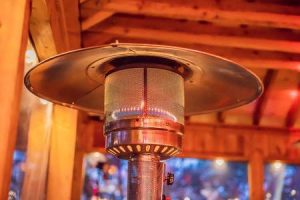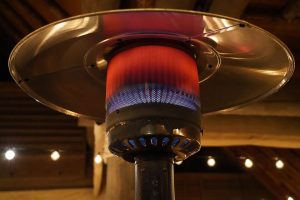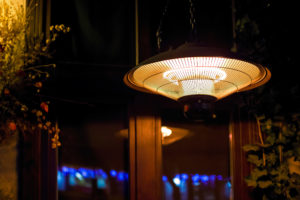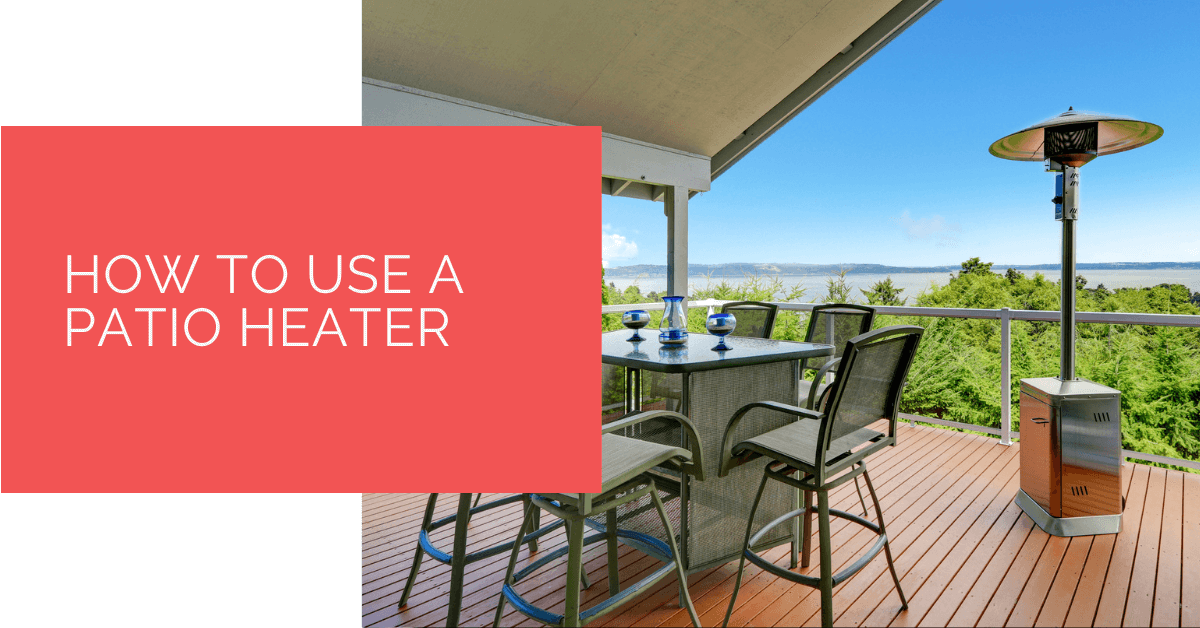The freezing chill of winters forces people to unwanted house arrests. With the purchase of a patio heater, you may alleviate cabin fever and enjoy the outdoors sooner.
Patio heaters are an excellent method to enhance the appeal of your deck, or other outside space during the fall and winter months. It will prompt you to make full use of your outdoor set up.
The patio heater provides ample warmth and ambience, allowing you to enjoy your backyard all year long.
To get the most out of it, you must understand its safety features and how to use patio heater.
Contents
Key Takeaways
- Patio heaters are a great way to extend outdoor enjoyment during colder months, providing warmth and ambience for year-round use of your outdoor space.
- When using a patio heater, it’s essential to prioritize safety by considering safety features like tempered glass, anti-tilt design, thermocouples, and proper placement and fuel management.
- Various types of patio heaters are available, including freestanding, tabletop, and wall-mounted models, each with advantages and suitable applications.
Safety Features of Patio Heater
Patio heaters are built with consumer safety in mind and helps to avoid fires and accidental injury. However, you should consider following aspects when purchasing a patio heater.
- Restaurants and bars have heaters with roaring flames. You must check that the domestic use patio heaters have solid tempered glass to contain the flames. They usually come with tubing or an emitter.
- It’s good to go with anti-tilt design features that helps in preventing the tipping. You may choose a higher-end model with an automated switch option.
- A thermocouple detects temperature changes and shuts off the gas valve if the flame goes out. Hence, it is suggested to check for the same.
- Any patio heater must have all of the necessary safety certifications and marks. It is recommended to always double-check the relative safety rating.

Types of Patio Heater
You can now increase the number of days your patio is open while using commercial patio heaters. Enjoy the view outdoors without feeling chilly or hazy.
Let’s read through various types of patio heaters that are available in the market.
Freestanding Patio Heater
These heaters are the most prevalent type and use propane as a fuel source. They are convenient because they can be put up almost anywhere outside.
They consist of four parts:
- Base
- Pole
- Heat source
- Reflector
If it’s a propane heater, the base can store a propane tank, whereas the pole extends the heat source higher. The heater or heat source is rated in BTU (British Thermal Unit). The higher the BTU, the more heat the heater can provide.
The reflector reduces heat loss upward by reflecting heat down to the heater’s region.
Note: Some floor heaters don’t have a reflector and they run on propane, electricity, or natural gas.
Tabletop Patio Heater
Tabletop heaters frequently resemble miniature versions of floor or freestanding patio heaters. There are some that are even disguised as outdoor table lights. It is also utilized as a floor heat lamp.
They almost have the same features as a freestanding patio heater. Since they are smaller, they have a reduced BTU range and cannot heat a bigger space.
These heaters are available in propane or electric versions.
Wall-Mounted Patio Heater
Wall-mounted heaters are an easy method to keep your heat source up. They allow you to enjoy your patio fully.
These are an excellent choice if you require a heater but lack the necessary space.
They are usually electric and emit infrared heat. They often have wall mount brackets and tilt up or down. Some of them come with an added feature of direct heating and remote operation.

How to Use Patio Heater Safely
After reviewing the safety features and determining which type to buy, there are a few things to keep in mind to ensure your patio heater works safely.
Placement of the heater
Patio heaters heat objects and people nearby, not across long distances. A heater placed too close to certain items can cause a fire.
It is suggested to keep patio heaters away from flammable liquid or objects like propane tanks, lighter fluid etc.
Three feet is the recommended distance from combustibles. If your patio heater has additional features or structures, it’s vital to refer the instruction manual.
Safe outdoor surroundings
Patio heaters should only be used outdoors, with adequate clearance and in a safe atmosphere. They require sufficient air circulation to avoid carbon monoxide build-up.
Make sure there are no obstructions to ventilation. Since BTU guidelines vary sometimes, follow the manufacturer’s recommended clearance. Never set anything above or below your patio heater, nor on grass.
Note: If you plan to set the heater on your lawn, be sure it is on a firm surface.
Security of the fuel
Patio heaters use a variety of fuels, each with advantages and disadvantages in terms of operational safety. The most prevalent fuel types are propane and natural gas.
In order to avoid leaks and damages, maintain your tanks and valves effectively. When not in use, close the gas tank valve and turn off the switch. This will keep your propane tank safe.
If you have a spare tank, keep it away from heat sources. Natural gas patio heaters are more affordable than propane, and many versions can heat a wider area.
Anti-Tilt system
Patio heaters are tall, making them top-heavy and prone to tipping and falling. While some patio heaters have anti-tilt systems to reduce movement, it’s always good to go for heat-resistant stabilizers.
Alternatively, you can pin the heater to the lawn using flame-retardant knots. If you have a small or windy patio, a tabletop patio heater is preferred.

Wind and Rain shielding
While most patio heaters are weather-resistant, wind may still wreak havoc on them. Protect your patio heater by securing it with weights or relocating it in a less exposed place.
The wind also affects the performance of your patio heater. The more exposed your patio heater is to wind, the more fuel it takes to produce the same BTUs.
Note: If there are kids in the family, it is crucial to establish fire safety guidelines and boundaries when using patio heaters.
Heat Pump Source: Reliable Heating and Cooling Solutions
At Heat Pump Source, we take pride in our unwavering commitment to serving the UK with top-tier HVAC solutions. From the efficiency of heat pumps and the cool relief of air conditioning to the warmth of boilers, radiators, and underfloor heating, our dedicated team is always at the forefront of innovation. We understand the unique needs of every household and business, and we strive to provide dependable health and cooling products and services that are tailored just for you. Ensuring your comfort and satisfaction is our utmost priority. Whether you have questions, need guidance, or require support, we’re always here to assist. Please don’t hesitate to contact us; we’re eager to be of service.
Conclusion
Enjoy a lovely evening of outdoor dining or stargazing on chilly autumn nights in a warm comfort shield of your patio heaters. Use an exterior sidewall to set up and spend a night with your family or friends.
You must enquire the key points, safety guidelines on how to use a patio heater. Choose a power type that is appropriate for your location.
About the Author
At Heat Pump Source, our articles are the product of a collaborative effort among a team of highly skilled HVAC experts. Our dedicated professionals, hailing from diverse backgrounds in heating, ventilation, air conditioning, and refrigeration, contribute their extensive knowledge and experience to every piece of content. This multidisciplinary approach ensures comprehensive coverage. Our commitment is to deliver authoritative, reliable, and tailored advice to meet the unique needs of every household and business across the UK.

